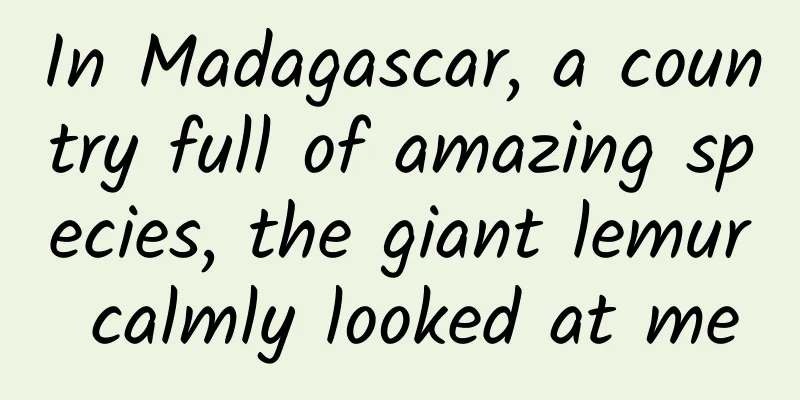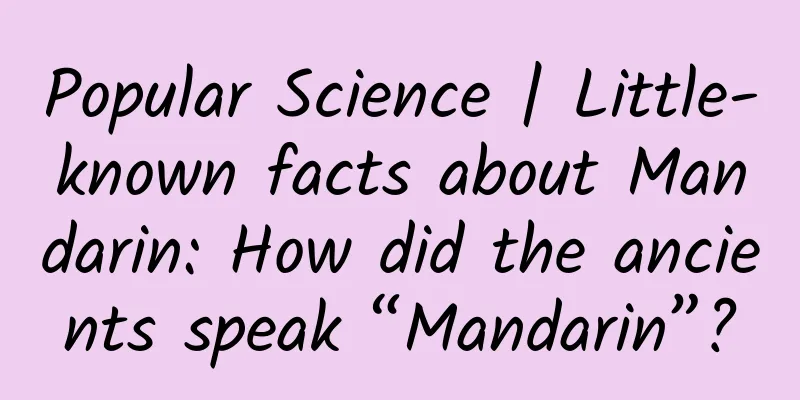In Madagascar, a country full of amazing species, the giant lemur calmly looked at me

|
The Republic of Madagascar is located in southeastern Africa. It is an island country in the Indian Ocean. Its territory includes Madagascar Island and several surrounding islands. Madagascar Island is the fourth largest island in the world. The relatively isolated natural environment of the island makes it one of the most biodiverse areas in the world - 80% of the wild animals and plants here are endemic species. Madagascar has very different ecological environments, including tropical rainforests, terraced fields, grasslands, deciduous forests and deserts, all on the same island. These ecological environments have their own unique species composition. It can be said that Madagascar is a living textbook of biological evolution . (1) Madagascar is located in the southeast corner of the African continent, facing the Indian Ocean to the east; (2) The eastern coast is mostly tropical rainforest; (3) The central highlands are mostly terraced fields; (4) The west is mainly grassland; (5) The famous deciduous forest and Baobab Avenue; (6) The south is mainly desert and thorny shrub forest|Aleix Cabarrocas Garcia & Jean-Louis Vandevivère & Frank Vassen / Flickr; MAURO Didier & Moongateclimber / Flickr; JialiangGao / peace-on-earth.org A few years ago, I went to Madagascar and spent two weeks as an intern near the Andasibe-Mantadia National Park in the eastern rainforest. Here, I saw a completely different way of dealing with nature. Rainforest in Andasibe-Mantadia National Park, Madagascar | Frank Vassen / Flickr In the rainforest, everyone has their own unique tricks If the dry forest in western Madagascar is a living hell, with animals and plants using various tricks to survive in such a harsh environment, then the humid rainforest in the east is a paradise for animals and plants . Here are the famous giant lemurs and finger monkeys. This little cutie holding a branch is one of the smallest lemurs, Microcebus lehilahytsara of the genus Microcebus (mouse lemur)|Yu Tianyi The plant species are also quite rich. Almost all the big trees are covered with thick lichens and mosses, and almost all the trees with mosses have epiphytic orchids, and you can usually see several kinds of epiphytic orchids growing on the same tree. Bulbophyllum onivense is as big as moss|Yu Tianyi However, it is impossible for organisms to live comfortably in such an environment. The extremely high species abundance and individual density lead to extremely fierce competition, and the selection pressure has led to the emergence of many peculiar species here . The famous "Darwin's Orchid" Angraecum sesquipedale is a good example. The spur of the Great Comet Orchid is longer than the flower itself. Darwin predicted that only pollinators with a mouthpart of a certain length could pollinate it, which was later confirmed. The arrow shows the spur, where the nectar is|Wilferd Duckitt & sunoochi / Flickr It was not until I arrived in Madagascar that I discovered that the giant comet orchid was not so strange in the local area: the species of comet orchid (Angraecum) and aerangis (a close relative of the comet orchid) here are extremely rich, and sometimes two or three species can be seen on a single tree. Most comet orchids and boat orchids have very long spurs. The most exaggerated boat orchid (Aerangis punctata) has a spur that is about six times the length of the entire plant . Therefore, the amazingly long spur of the big comet orchid did not pop out of nowhere - seeing so many of its strange relatives, you can probably understand how this species appeared. Aerangis punctata: the long-distance airship orchid|Yu Tianyi Aerangis citrata, the genus of the genus Aerangis, the small tail is the spur|Yu Tianyi Interestingly, the comet orchid genus has not been so stubborn and has only followed this one evolutionary path. I have also seen another very small comet orchid (Angraecum humblotianum), with flowers only the size of rice grains and only very short, almost invisible spurs, but it is still one of the most common orchids in this forest. Comet orchid Angraecum humblotianum, whose flowers are as big as rice grains | Yu Tianyi The young land is hurt Madagascar is a particularly young land for humans. It was only between 350 BC and 550 AD that definite traces of human activity were found here, and large-scale land reclamation and cultivation only began gradually about 1,400 years ago, which has allowed it to preserve some ancient pristine tropical forests . Stick insects and mantises mimicking lichens and mosses in the primeval forest|Yu Tianyi However, in Madagascar, humans are destroying the original forest at an alarming rate . Due to the underdeveloped agriculture in Madagascar, local residents have long relied on slash-and-burn farming to cultivate the land. If you travel between national parks, you will see endless farmland and eucalyptus forests - the sub-humid forests in the central part of Madagascar have long been cut down, and the ecological environment has completely changed, from forest to grassland; the humid rainforest in the east has not escaped the disaster. Large areas of original forests were cut down and eucalyptus trees were planted to provide charcoal necessary for fire, but the plant species under the eucalyptus forest are very poor, and few animals live in the eucalyptus forest. Most of the primary forests disappeared in modern times , and 40% of them were destroyed in just 50 years between 1950 and 2000. Now, only 10% to 20% of the primary forests are left in Madagascar - but these remaining primary forests are also disappearing. The local slash-and-burn farming has destroyed a considerable part of the original rainforest|Diorit / wikimedia One of the pillar industries in Madagascar is tourism, and the tourism industry here can be equated with ecotourism . There are not many cultural relics here, and most tourists go to see the natural scenery and wild animals and plants, so the local ecotourism industry is very developed. This also makes Madagascar's tourist areas more developed than residential areas. In the more remote national parks, we saw several mountain hotels that were no worse than five-star hotels. They were all built based on protected areas. The primeval forest opposite the hotel|Yu Tianyi Supporting sustainable development with ecotourism Near my station is the Andasibe-Mantadia National Park. The most famous star species here is the giant lemur (Indri indri), which has a color scheme similar to that of a panda and has a similar status to that of a panda. It is the local umbrella species . The giant lemur is the main target species that tourists want to see in this national park, and it is easier to see it under the guidance of a guide. They are usually active during the day, and their large size makes them easy to spot. The big lemur in the forest opposite the hotel|Yu Tianyi Due to long-term contact with humans, they are already very familiar with humans. If you encounter a big lemur in the forest, they usually don't run away quickly, but look at you calmly - it feels like they are observing you, not you observing them. After the two sides stare at each other for a while, they will start doing what they are doing. But in fact, as a species endemic to Madagascar, the giant lemur is already facing the risk of extinction and is listed as critically endangered on the IUCN Red List. Only near the national park can we see the giant lemur living comfortably. It is the benefits brought by ecotourism that enable the national park and nearby private reserves and local communities to operate sustainably. The Michinzu Conservation Area near the national park is also a community in itself, with most of the staff being local residents. Based on the conservation area, a lot of animal and plant conservation work has been carried out here , including breeding native animals and plants, conducting surveys and conservation in cooperation with scientists, and training residents in cooperation with the Eco-Guide Association. Local residents benefit from environmental protection and ecotourism. The distribution area of the giant lemur is concentrated in part of the east coast of the Falkland Islands|Marius CONJEAUD & Alex Dunkel / wikimedia In Madagascar, the distance between humans and nature is generally well maintained . People do not overly disturb the wild animals around them, and these animals have found ways to coexist with humans over a long period of time. Before I actually arrived in Madagascar, I couldn't imagine how ecotourism alone could support the daily lives of residents in the entire region and develop sustainably . However, Madagascar's ecotourism has become a complete system - I might have thought that this coexistence model between man and nature sounded a bit too optimistic before, but in Madagascar, this model has a more concrete concept and is not impossible to achieve. This way of coexistence between humans and nature is very rare. I hope that this rare relationship can continue to be preserved in the few remaining virgin forests in Madagascar. Author: Yu Tianyi This article comes from the Species Calendar, welcome to forward If you need to reprint, please contact [email protected] |
<<: Ankylosing spondylitis, what is this “immortal cancer”?
>>: Red, yellow, pink...why have I never seen black flowers?
Recommend
What is the interest rate of the special national debt for fighting the epidemic? How to buy the 2020 special government bonds
On June 18, the special government bonds were iss...
From collecting stamps and cards to collecting art... Why do we like collecting things so much?
In 2016, the British BBC TV station broadcast a v...
When you were visiting scenic spots, did you eat the themed popsicles?
From tapes, bookmarks, refrigerator magnets to do...
Why do I recommend you raise Rudina fowl instead of Call ducks?
The glorious era of the Call duck is still vivid ...
King's Counterattack: Use AI to play WeChat Jump Jump, automatically brushing points to break 10,000 points
Recently, the WeChat mini game Jump Jump has beco...
Ideal Auto released an announcement that as of April 9, the delivery volume of Ideal ONE exceeded 4,500 units
Affected by the epidemic, most physical industrie...
With large-scale sandstorms approaching, how are sandstorms classified? What are the criteria for issuing sandstorm warnings?
Whenever the weather turns warmer, some relativel...
Summary of iOS classic interview questions - memory management
[[163414]] I made a summary based on my own situa...
Mimi Meng is so expensive, and vivo signed a one-year contract. How else can brands and self-media cooperate?
Last night, a golden sentence appeared in Mi Meng...
Will VR be the future of gaming? Can virtual reality technology open up new ideas for gaming?
If you have watched the Conan the Killer Schoolbo...
Where can I make a 400 number and what are the ways to do so?
In daily life, you must have seen a ten-digit 400...
"Short video traffic diversion picture and text number" picture and text diversion gameplay is super simple, can be copied and matrixed
Training course video content introduction: Quick...
Do you think you know what kumquat is? Actually, you don’t
Tony Harrison, a famous British left-wing poet, o...
There are too many leftovers during the Spring Festival! How to deal with them safely?
During the Chinese New Year, people naturally enj...
Color TV enterprises have to fight a tough battle in the post-entry hardware era
The impact of the expiration of energy-saving and...









